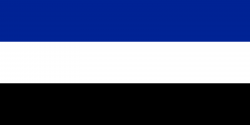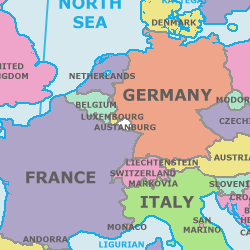Austanburg
Jump to navigation
Jump to search
Return to News Files, Atlas
- Official Name: Republic of Austanburg
- Capital City: Austan (49°14'N 6°59'E)
- Places of Interest: Augsburg, Austan, Hagstrom, Saxsburg, Strasserburg, and Wilnerburg
- Major Languages: Austanburgish and German
- Demonym: Austanburgish
- Government: Unitary semi-presidential constitutional republic
- President: Bela Vardem
- Prime Minister: Victor Cypher
- Area: 2,683 km²
- Population: 634,485
- Density: 236.48 km²
- Monetary Unit: Euro; formerly Austanburgish mark
- Major Resources: Coal, iron, and ore
- National Defence: The Austanburgish Armed Forces comprises both Ground Forces and Air Force. A landlocked country, Austenburg has no Naval Forces.
- International Relations: Member of the Council of Europe, European Union, Interpol, NATO, UNESCO, United Nations, World Health Organisation, and the World Trade Organisation.
- Domestic Metahumans: None documented
- History: Austanburg is a small Western European nation that, more than eighty years after the end of World War II, the dissolution of its monarchy, and the implementation of a democratic parliamentary government, is still struggling to cope with its emergence as a modern nation.
Austanburg was established as a feudal state during the 11th Century under the reign of German nobleman, later King, Angevin I. Austanburg became an independent principality in the late 14th Century, but its independence was short-lived as it was conquered by the powerful Holy Roman Empire in 1526. This small nation of only a few thousand square kilometres remained under Imperial domination until the dissolution of the Holy Roman Empire in 1806 during the Napoleonic Wars. Throughout this period, the descendants of King Angevin I remained on the throne of Austanburg as the Empire ruled over the conquered state.
Freedom was once again short-lived, however, as Austanburg's monarch was overthrown by a Communist-backed revolution in 1921. The monarchy was displaced, and most of the royal family was killed by the new Communist regime, with only a few descendants of King Angevin I able to escape the country and survive, settling in England, France, and the United States.
At the close of World War II, Austanburg was liberated from Communist control, and a democratic government was set up by the Allied occupational forces. Austanburg struggled with its new-found political and economic independence, striving to discover a path that would lead it to self-sufficiency and freedom from American economic dependency. It was not until the late 2010s and the election of reform presidential candidate Bela Vardem that Austanburg discovered that path. Through tax incentives and the promise of a large labour force, the establishment of foreign industrial facilities in Austanburg was encouraged.
President Vardem's plan seems to be having the desired effect; the past decade has seen Austanburg experiencing an economic upswing, with European branches of many major American and British corporations, including Braddock Industries, LexCorp, Ferris Aircraft, Rand Corporation, Victoria Motor Corporation, and Xanatos Enterprises, taking advantage of the country's generous incentives.
Although currently undergoing a great building boom, Austanburg seeks to maintain its historic heritage and architecture, with severe restrictions placed on the demolition of old buildings. Every attempt is made to blend new architecture with the style of its historic predecessors.
The capital of Austanburg is the city of Austan, located in the centre of the country. The Austanburgian Parliament meets in the ancient Royal Castle, while the Presidential residence is located, symbolically, in the historically renovated prison. President Vardem is nearing the end of his second five-year term of office and is expected to run for at third term.

